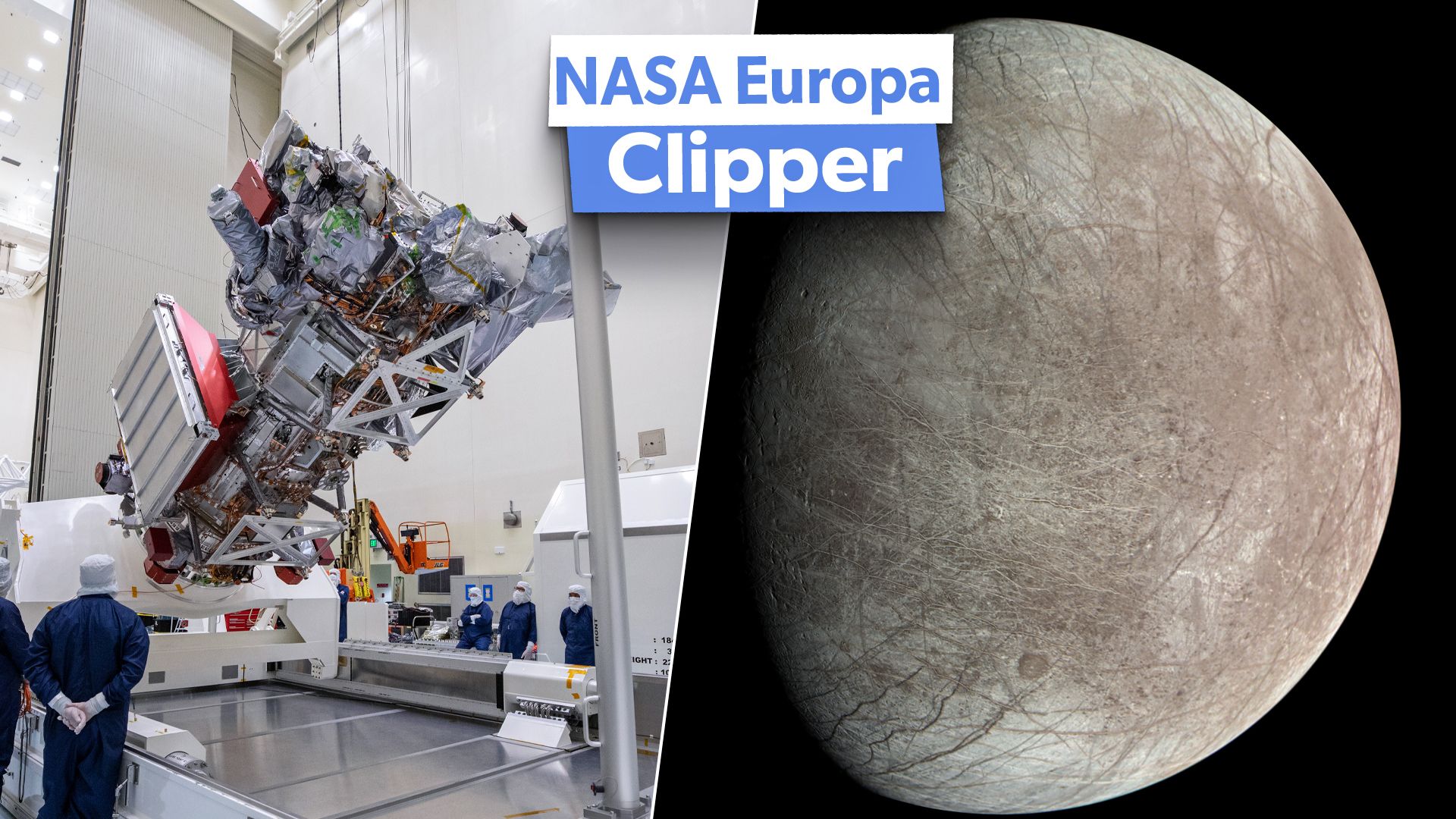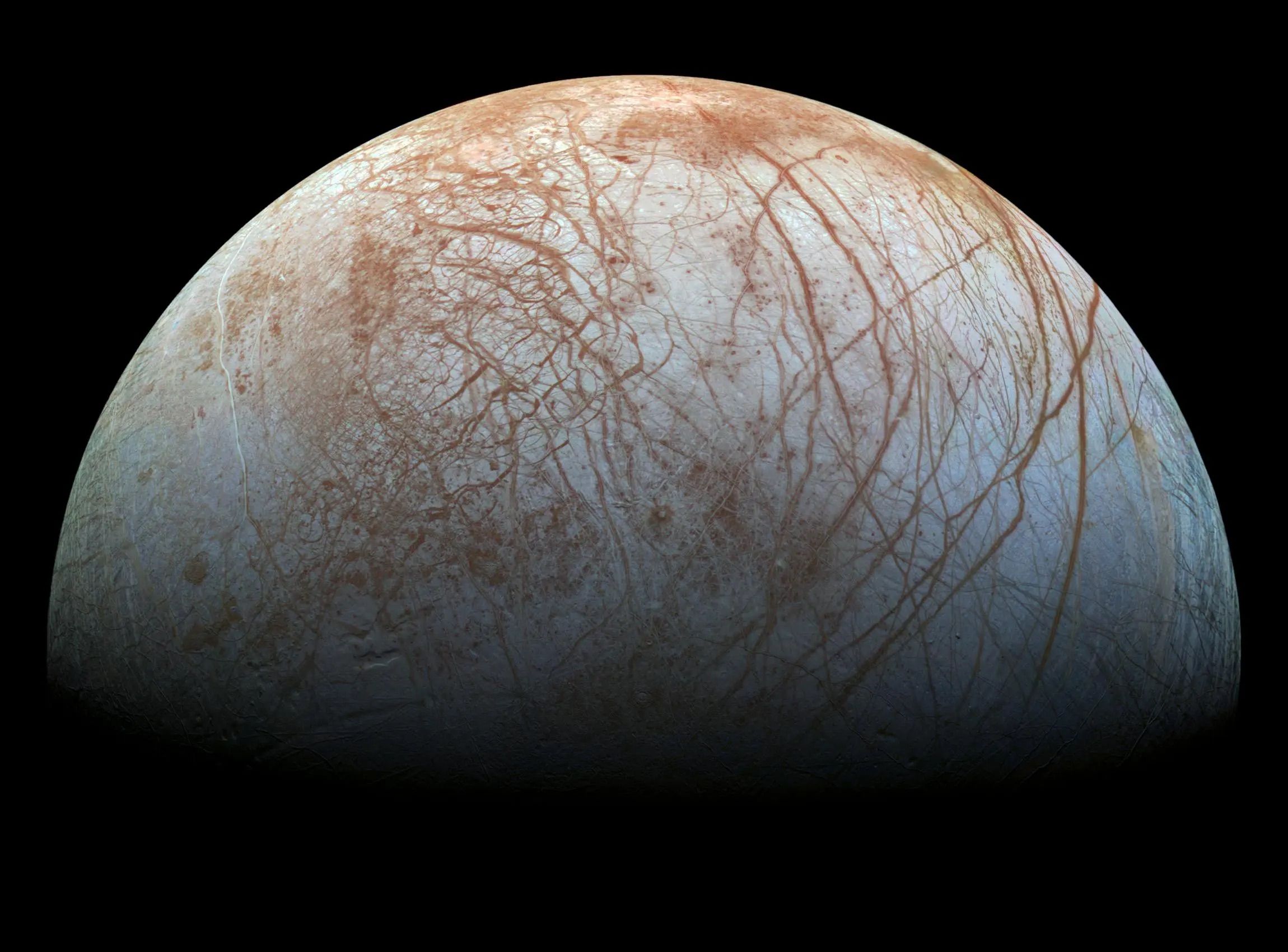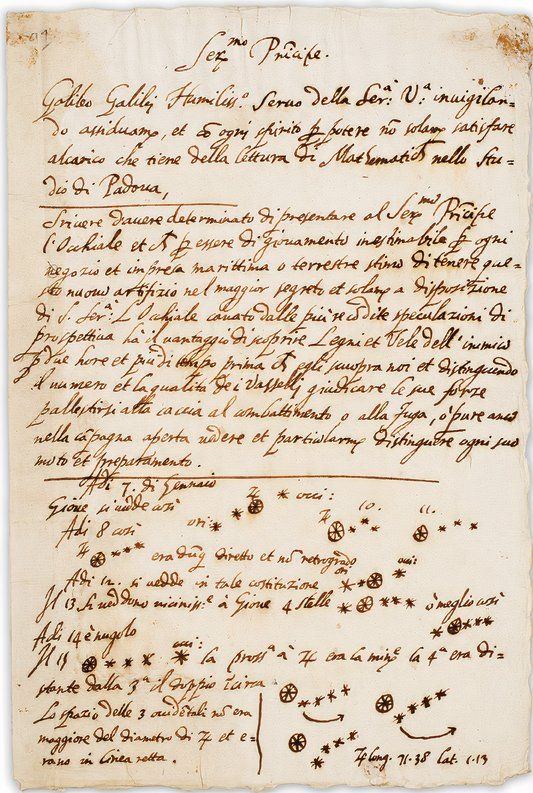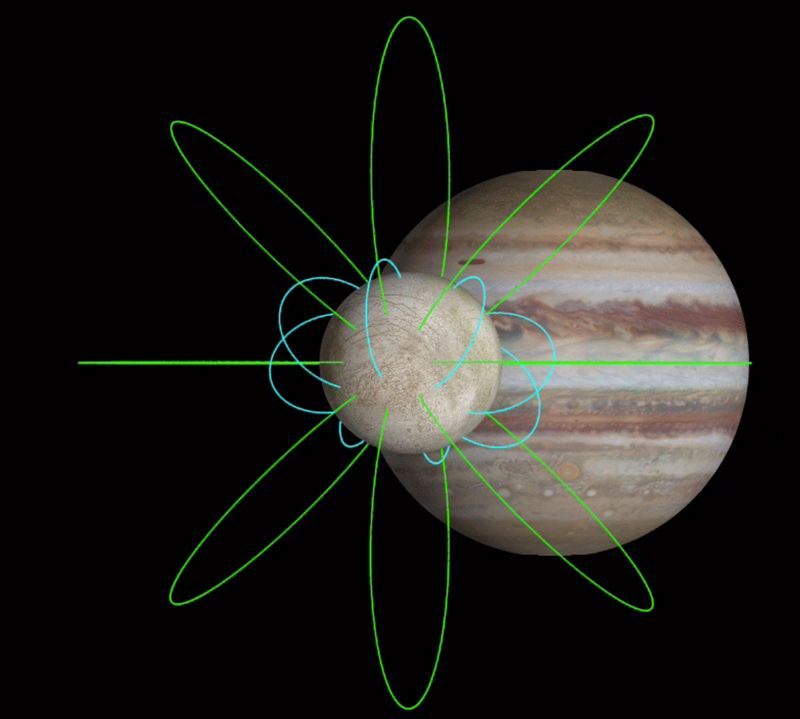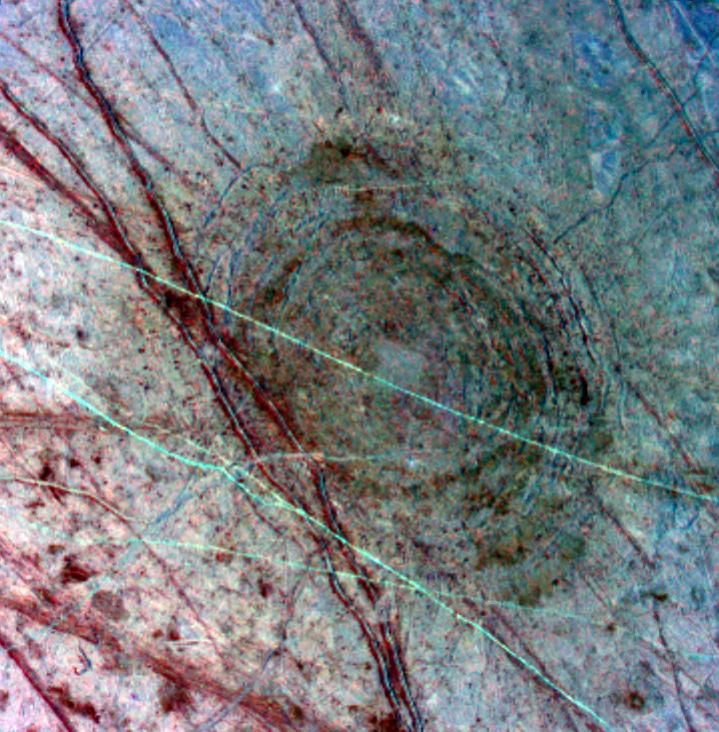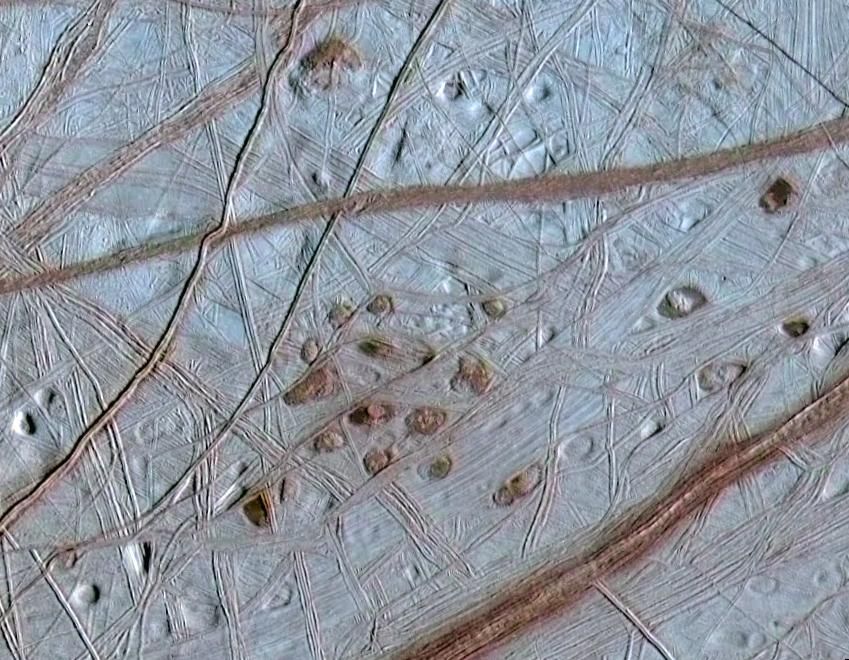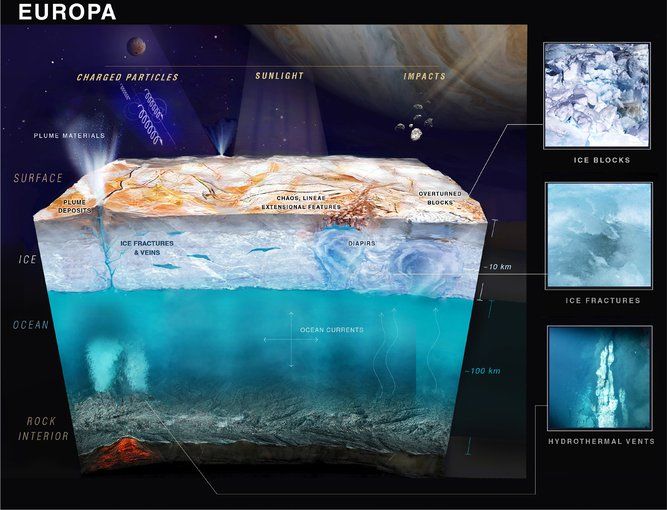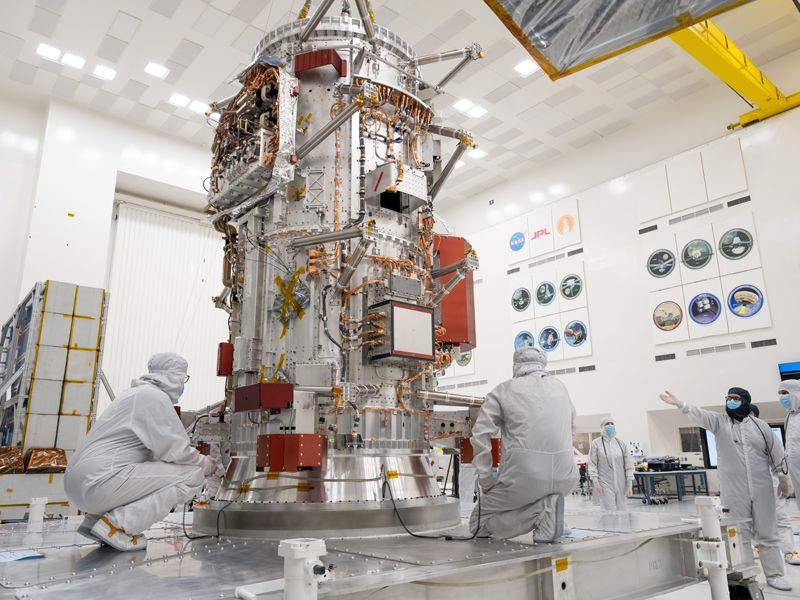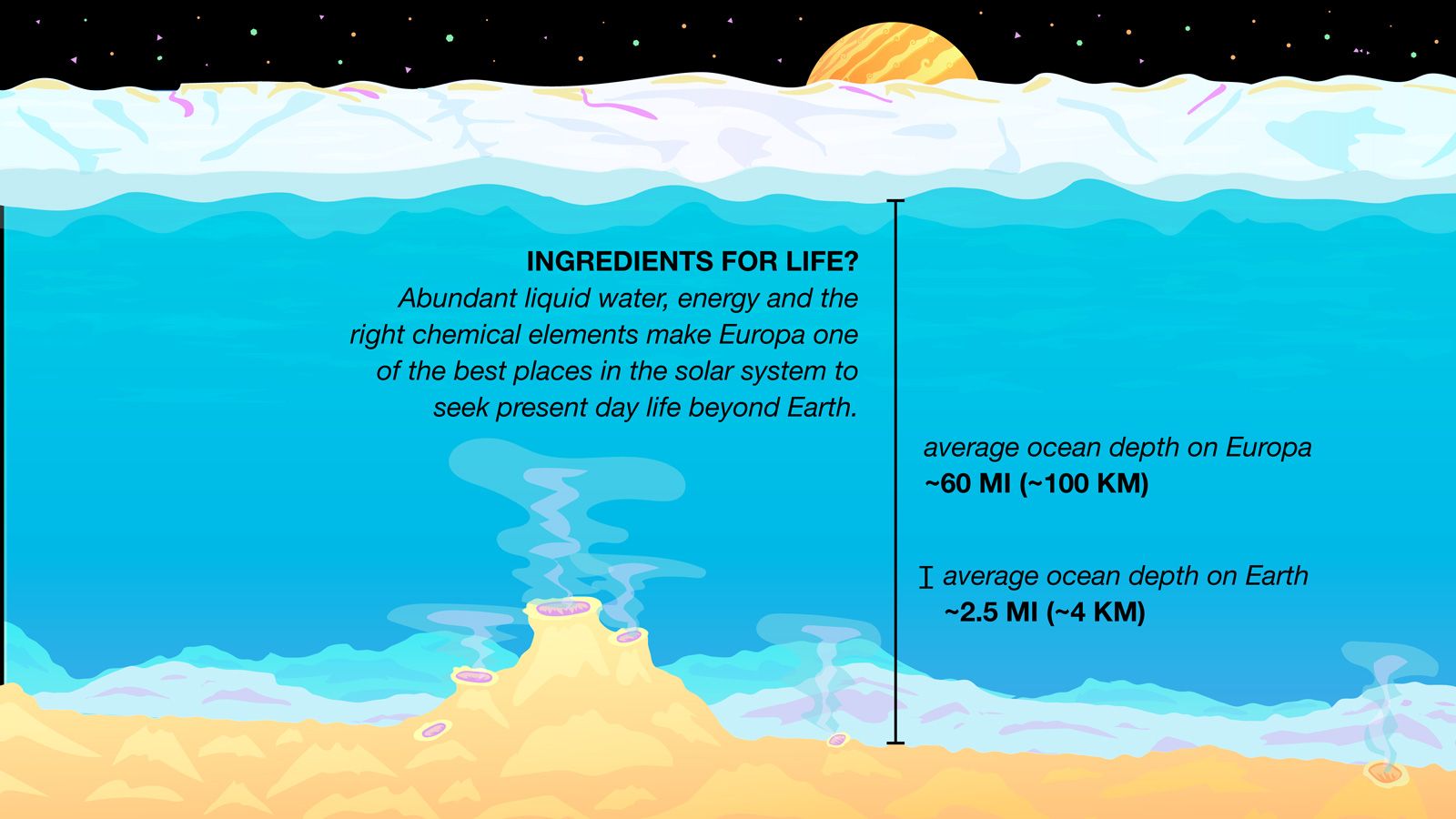Summary
- Europa’s suspected subsurface ocean may contain life-supporting chemistry, including essential elements and potentially bacterial life.
- NASA’s Europa Clipper mission aims to study Europa’s shell thickness, composition, and geology to determine potential habitability.
- Tidal heating on Europa generates internal frictional heat, potentially preventing its subsurface ocean from freezing and supporting a thick outer ice shell.
From ancient civilizations gazing at the stars with the naked eye to modern science scanning the cosmos with powerful telescopes that orbit the Sun, the pursuit of finding life beyond our planet has long been a driving force behind astronomical exploration. The vastness of the universe, filled with billions of galaxies and untold possibilities, ignites our imagination, inspires wonder, and fuels technological advancements once thought impossible. One such marvel of innovation and engineering, NASA’s Europa Clipper, hopes to bring us one step closer to answering humanity’s most compelling question: Are we alone?
Photo: NASA
Where our fascination with Europa began
Europa was first discovered in 1610 by Florentine astronomer, physicist, and engineer Galileo Galilei. Using a homemade telescope, Galileo observed Jupiter and its four largest moons, Europa, Io, Ganymede, and Callista, over several nights, taking notes and drawing sketches of their movement (pictured below). Galileo concluded they were orbiting Jupiter, confirming fellow astronomer Nicolaus Capernicus’ theory that Earth was not the center of the universe as was previously long believed.
Photo: NASA
German astronomer Simon Marius may have observed Jupiter’s moons around the same time as Galileo, and is even credited with naming them (with a little help from fellow astronomer Johannes Kepler). However, Galileo is officially credited with the discovery. Hence, they are known today as the “Galilean moons.”
Why do we think there may be life on Europa?
Europa’s icy surface was first identified by scientists at Kitt Peak National Observatory in 1972, via spectroscopic observation. In 1979, NASA’s Voyager 1 obtained a full global image of Europa (below, left) from a distance of roughly 1.2 million miles (2 million km). Images provided by NASA’s Voyager 2 in 1979 gave us our first up-close look at Europa’s surface (below, right), revealing ridges and cracks that suggested potential geological activity.
Most of what we know about Europa today was learned from NASA’s Galileo spacecraft, named after the famed astronomer who discovered it. Galileo orbited Jupiter from 1995 to 2003 and made 12 close passes by the moon, providing detailed images and data that have led scientists to believe Europa is an ocean world. Not just any ocean world, but one with a global ocean that may be ten times deeper and triple the total volume of all of Earth’s oceans combined. This is significant because water is one of the key ingredients for life as we know it.
How do we know there’s an ocean beneath Europa’s icy shell?
Gravity data acquired by the Galileo spacecraft indicates that Europa, which has an equatorial diameter of 1,940 miles (3,100 km), slightly smaller than Earth’s Moon, has a small iron core surrounded by a rocky mantle, then a layer of water and/or ice. However, gravity data alone cannot clarify whether this layer is water, ice, or some combination of the two. As such, scientists turned to Galileo’s magnetometer, which measures changes in a magnetic field, to draw further conclusions.
Outside the Sun, Jupiter boasts the strongest magnetic field in our solar system, spanning an incredible 12 million miles (19,312,128 km), east to west, titled at a 10-degree angle from its axis of rotation. Jupiter completes a rotation every 10 hours. Europa slowly orbits Jupiter every 3.5 days and exhibits unstable magnetism that varies in response to Jupiter’s massive magnetic field, which sweeps across it with each 10-hour rotation.
Data collected by Galileo’s magnetometer observed an interesting relationship and interaction between Jupiter’s magnetic field and that of Europa, leading scientists to believe that the layer above Europa’s rocky mantle is, in fact, a liquid water ocean covered by a roughly 20 km (12.4 mi) thick shell of ice.
“One of the most important measurements made by the Galileo mission showed how Jupiter’s magnetic field was disrupted in the space around Europa. This measurement strongly implied that a special type of magnetic field is being created (induced) within Europa by a deep layer of some electrically conductive fluid beneath the surface. Based on Europa’s icy composition, scientists think the most likely material to create this magnetic signature is a global ocean of salty water.” –NASA
Photo: NASA
What prevents the subsurface ocean from freezing like its outer shell?
As depicted in the video below, Europa orbits Jupiter at a slight eccentricity of 1%, which describes its deviation from a perfect circle. As Europa orbits Jupiter, it moves slightly closer and farther from the planet, causing the moon to stretch and contract due to Jupiter’s gravitational pull. Known as tidal heating, this continuous flexing generates frictional heat within Europa, from the inside out. Based on Galileo’s data and scientific calculations, scientists estimate that this tidal heating would generate enough heat to melt ice into water from the inside out, leaving a thick outer shell of ice.
Geological evidence of Europa’s subsurface ocean
In addition to Galileo’s gravity and magnetometer data, geological clues suggest the presence of a subsurface ocean on Europa.
Lack of craters suggests geological activity
In contrast to Earth’s moon, which is covered in craters, Europa’s surface has very few craters. This is significant because craters, or a lack thereof, can help astronomers determine the age of a planet or moon.
“As a rule of thumb, older surfaces have been exposed to impacting bodies (meteoroids, asteroids, and comets) for a longer period of time than younger surfaces. Therefore, older surfaces have more impact craters. Mercury and the Moon are covered with impact craters; their surfaces are very old. Venus has fewer craters; its surface has been covered recently (in the last 500 million years!) by lava flows that obscured the older craters.” –Lunar and Planetary Institute
The size and number of craters on Europa’s icy surface indicate an age of about 60 million years, which means something has caused Europa’s surface to be smoothed over since it was formed along with our solar system about 4.6 billion years ago. Similar to the surface of Venus being smoothed over by lava, scientists believe Europa’s surface has been smoothed over by water and ice covering its craters.
Frozen scars on Europa’s icy shell
The surface of Europa features countless crisscrossing ridges and grooves that interestingly appear in pairs, as shown below. Scientists theorize these double ridges may have resulted from the orbital flexing and tidal heating described earlier. As Europa orbits Jupiter eccentrically, it stretches and contracts, causing cracks on its icy shell, which floats freely over the surging ocean below. As the flexing continues, the friction between the severed surface pieces begins to heat, melting the edges, which refreeze upward on both sides of the crack, forming the double ridges. This theory is supported by evidence of ice rubble along the bottom of the ridges, which may have tumbled down as the ridges rose.
Massive impact leaves bullseye behind
Europa’s surface also features a unique “bullseye” structure called Tyre, pictured below, which provides additional clues about Europa’s subsurface. With a width of about 25 miles (40 km), Tyre’s concentric circles suggest something massive impacted Europa’s surface, completely penetrating its outer shell down to the ocean below. It is believed the moon’s surface, which can reach extreme temperatures up to minus 260 degrees Fahrenheit (minus 160 degrees Celsius), quickly refroze over the exposed ocean, leaving behind these concentric ridges, which resemble frozen water ripples.
Photo: NASA
Scientific calculations based on Tyre’s width, the characteristics of the concentric circles, and the penetrating impact theory indicate that the Europa’s outer ice shell is about 20km thick. This estimate is consistent with the thickness indicated by Galileo’s magnetometer data described above.
Chaos terrain suggests disruptive activity below
While Europa’s surface is mostly ice, the moon’s topography also features reddish bands, cracks, spots, ridges, and other features called “chaos terrains.” These darker areas, as seen in the photo of Europa’s surface below (right), are believed to be a mixture of water ice, hydrated salts, and possibly magnesium sulfate or sulfuric acid resulting from disruptive surface activity. Scientists theorize that as warmer subsurface water rises, lakes form within the moon’s outer shell. Gradually, the ice above these lakes breaks apart into pieces, as depicted in the image below (left), which float and resettle randomly, then subsequently refreeze along with the materials churned from the ocean below.
Tidal heating turns Europa into a lava lamp
All over Europa’s surface appear spots, pits, and domes called “lenticulae,” the Latin term for freckles. Some of them, about 6 miles (10 km) in diameter, appear darkened, as pictured below. According to Europa Mission Project Scientist Dr. Robert Pappalardo, these may be the result of tidal heating producing a lava lamp effect within Europa’s subsurface ocean. Similar to the formation of chaos terrain described above, warmer ice rises from the bottom of the ice shell while colder surface ice descends, leaving behind dark spots of frozen subsurface elements. (Nowhere on Earth is ice thick enough to experience this phenomenon.)
“Europa acts like a planetary lava lamp, carrying material from near the surface down to the ocean, and, if they exist, potentially transporting organisms up toward the surface.”- Dr. Robert Pappalardo
Photo: NASA
Water plumes may provide more clues
NASA’s Hubble Space Telescope has observed and captured images (composite image below, left, 7 o’clock position) that suggest plumes of water, estimated to reach heights of about 125 miles (200 kilometers), may be erupting from Europa’s surface. These plumes are presumably similar to those erupting on the surface of Saturn’s moon Enceladus as observed by NASA’s Cassini spacecraft in 2005 (below, right).
Does Europa possess the other ingredients necessary to support life?
Even more significant than the mere presence of water on Europa, scientists suspect Europa may possess all three ingredients necessary to support life:
Scientists believe elements such as oxygen, hydrogen, sulfur, nitrogen, and phosphorus were presumably incorporated into Europa’s composition during its formation. Tidal flexing could release these elements from the moon’s rocky seafloor into the surrounding ocean. However, one relatively recent discovery provides even more optimism that Europa possesses the chemistry necessary to support life. Astronomers believe they have identified carbon dioxide on the surface of Europa using data obtained by the James Webb Space Telescope. Notably, they believe carbon was not deposited on the surface by external sources such as asteroids or meteorites but originated from the ocean below. Geronimo Villanueva of NASA’s Goddard Space Flight Center had this to say about these exciting findings in a 2023 news release:
“On Earth, life likes chemical diversity- the more diversity, the better. We’re carbon-based life. Understanding the chemistry of Europa’s ocean will help us determine whether it’s hostile to life as we know it, or whether it might be a good place for life” – Geronimo Villanueva
Samantha Trumbo, lead author of the paper analyzing this data, added:
“We now think that we have observational evidence that the carbon we see on Europa’s surface came from the ocean. That’s not a trivial thing. Carbon is a biologically essential element.” -Samantha Trumbo
While the Sun provides Earth with the energy needed to support life, this is not possible on Europa as its ocean would be devoid of sunlight due to its global shell of ice. One potential source of energy on Europa could come in the form of hydrothermal vents on its ocean floor, similar to those discovered on Earth in 1977 on the Galapagos Rift in the Pacific Ocean.
Image: NASA
Another source of energy could come from radiation. While Jupiter’s extreme radiation makes life impossible on Europa’s surface, that radiation could split water molecules within Europa’s atmosphere into oxygen and hydrogen. If oxygen, a highly reactive element, finds its way into the subsurface ocean, chemical reactions with other elements could provide the chemical energy necessary for life.
“Life needs a source of energy, the presence of certain chemical compounds, and temperatures that allow liquid water to exist. Jupiter’s icy moon Europa seems to be just such a place.”- NASA
In hisnovel 2010: Odyssey Two, written in 1982, Arthur C. Clarke offers a cryptic caution, “These worlds are yours, except Europa. Attempt no landing there. Use them together. Use them in Peace.”
What is the purpose of the Europa Clipper mission?
The Europa Clipper will build upon what we’ve learned from the Galileo spacecraft, making nearly 50 close flybys of Europa, each over a different area of the moon. By mission’s end, the Europa Clipper will have scanned and analyzed nearly the entire moon, with its closest approach altitudes just 16 miles (25 km) above Europa’s frigid surface. The mission is not one of life detection but rather one intended to determine whether life could exist in the oceans of Europa. However, one of the instruments aboard the spacecraft, the Surface Dust Analyzer, could potentially identify signs of life. More on that later in the “Europa Clipper: Specs and Instruments” section. According to NASA, the official Europa Clipper mission is as follows:
“Europa Clipper’s main science goal is to determine whether there are places below the surface of Jupiter’s icy moon, Europa, that could support life. The mission’s three main science objectives are to understand the nature of the ice shell and the ocean beneath it, along with the moon’s composition and geology. The mission’s detailed exploration of Europa will help scientists better understand the astrobiological potential for habitable worlds beyond our planet.” -NASA
Photo: NASA
The mission to Europa: a three-pronged approach
The mission can be divided into three parts:
- Analyze and determine the thickness of Europa’s shell and ocean-to-surface interaction
- Analyze Europa’s composition
- Analyze and characterize Europa’s geology
By determining the thickness of Europa’s icy shell, NASA could confirm the existence of water beneath and estimate its volume. This analysis could identify pockets of water or even lakes within the outer shell, altering the scope and greatly facilitating a future lander mission. Such a mission might attempt to penetrate Europa’s shell to retrieve water samples or even deploy a camera into Europa’s ocean. Ocean-to-surface analysis might also explain Europa’s lenticulae, or “freckles.”
Analyzing Europa’s composition will determine whether Europa has the chemistry needed to sustain life. Analysis of Europa’s ice, salts, elements, organics, and other materials will provide the invaluable information needed to determine whether life-supporting chemistry exists in its ocean.
Photo: NASA
Analysis of Europa’s geology will answer questions and test theories about the formation of Europa’s ridges, bands, and structures, such as Tyre. The existence of plumes could be confirmed, observed, and analyzed by the Europa Clipper. Analysis of Europa’s geological activity can provide information and answers about the ocean below.
The Europa Clipper: Specs and Instruments
Spanning over 100 ft (30.5 m) with its solar arrays deployed, the Europa Clipper is the largest spacecraft NASA has ever developed for a planetary mission. Upon launch, the Europa Clipper will weigh in at approximately 13,000 lbs (6,000 kg), including 6,000 lbs (2,750 kg) of fuel and propellant. The spacecraft’s dual solar array system consists of five solar panels per wing, holding 28120 Azur 3G28 solar cells. Electronics will be safeguarded by a thick-walled vault made of titanium and aluminum, protecting them from Jupiter’s harsh radiation while in orbit.
To accomplish its mission, the Europa Clipper features nine highly advanced scientific instruments, which are listed below.
- Europa Imaging System (EIS): The EIS is a dual camera system (wide and narrow-angle) for producing high-resolution color and stereoscopic images of Europa. The EIS will measure surface elevations and study geologic activity on Europa.
- Europa Thermal Emission Imaging System (E-THEMIS): Using infrared light, the E-THEMIS will detect the presence of warm liquid water on or near the surface, measure surface texture, and analyze its small-scale properties.
- Europa Ultraviolet Spectrograph (Europa-UVS): The UVS will determine the composition of Europa’s atmospheric gas and surface material composition and look for signs of plume activity.
- Mapping Imaging Spectrometer for Europa (MISE): The MISE will map the distribution of ices, salts, organics, and the warmest areas on Europa for geological history analysis.
- Europa Clipper Magnetometer (ECM): The ECM will confirm the existence of a subsurface ocean and measure its depth, salinity, and ice shell thickness. The ECM will also analyze the interaction between the ionized atmospheres of Europa and Jupiter.
- Plasma Instrument for Magnetic Sounding (PIMS): The PIMS will analyze and distinguish distortions in Europa’s magnetic field from Jupiter’s magnetic field. Subsequent analysis of Europa’s magnetic field will provide information about its ocean.
- Radar for Europa Assessment and Sounding: Ocean to Near-surface (REASON): This ice-penetrating radar will probe Europa’s shell for an ocean beneath and analyze the shell’s thickness and composition. Additionally, REASON will analyze surface elevations and search Europa’s atmosphere for plumes.
- Mass Spectrometer for Planetary Exploration/Europa (MASPEX): The MASPEX will analyze gases in the moon’s atmosphere and any existing plumes. MASPEX will analyze Europa’s subsurface ocean, its chemistry, ocean/surface material exchange material, and the effects of Jupiter’s radiation on the moon’s surface.
- Surface Dust Analyzer (SUDA): The SUDA will analyze particles of the moon’s surface or water particles that may be floating in space from various surface activities or water plumes. The SUDA will identify the chemical makeup and salinity of this space dust, which, according to Dr. Frank Postberg, Professor at the Institute of Geological Sciences at Free University of Berlin, could contain fragments of cellular material, the “smoking gun” for evidence of life.
“If life forms on Europa follow the same principle of having a membrane and DNA made from amino acids… then detecting [those chemicals] would be a smoking gun for life there.”- Dr. Frank Postberg
Europa Clipper launch and communications
The first launch window for the Europa Clipper is October 10, 2024, at 9:31 a.m. PDT (12:31 p.m. EDT.) The Europa Clipper will be launched by SpaceX’s Falcon Heavy from Kennedy Space Center in Florida, after which it will be propelled by its 24 engines supplied with 6,000 pounds (2,750 kilograms) of fuel. The Europa Clipper will employ a “gravity assist” flyby technique, passing by Mars, then Earth to increase its momentum and reach the velocity needed to reach Jupiter by 2030. Once in Jupiter’s orbit, the Europa Clipper will be powered by its solar arrays (pictured below) at a distance of about 5.2 astronomical units from the sun.
Photo: NASA
Communication between NASA and the Europa Clipper will be accomplished through the Deep Space Network (DSN), an internationally supported array of radio antennas designed for interplanetary missions. Through the DSN, the Europa Clipper will execute commands and transmit data back to NASA using its high-gain antenna. Upon mission completion, NASA’s plans call for the Europa Clipper to deorbit Jupiter and impact Ganymedes’ surface, avoiding potential contamination of Europa’s surface.
Future exploration of Europa
If life does, in fact, exist on Europa, an initial discovery would likely be found in microscopic forms, such as microbes or bacteria. However, such a discovery would support the possibility that larger, perhaps much larger, forms of life may be lurking in the deep, dark waters of the mysterious moon.
While the Europa Clipper represents a significant leap forward in the quest to answer our most profound questions, our journey into the depths of our universe is far from over. In fact, if things go as planned, NASA’s Europa Clipper may reveal discoveries that lead to an exciting new beginning: one that sees NASA’s Europa Lander go from concept to reality on a mission that attempts to finally answer the question, “Are we alone,” once and for all.

